Abstract
A cross sectional study was carried out to determine the prevalence of bronchial hyperresponsiveness and asthma in 3067 students aged 11-17 years in an urban and a rural area of Guangzhou (Canton), China. The methods used included a self administered questionnaire, a histamine bronchial provocation test, and allergen skinprick tests. Bronchial hyperresponsiveness was defined as a 20% fall in FEV1 and peak expiratory flow at a provoking dose of histamine (PD20) less than 7.8 mumol on two occasions four weeks apart. The response rate was 98.0% and 99.2% in the two areas. The prevalence of bronchial hyperresponsiveness was 4.1% and of diagnosed asthma 2.4% in the total population. There were no significant differences in prevalence between the urban and the rural area or between boys and girls. The 11-12 year group had a higher prevalence of bronchial hyperresponsiveness (7.6%) than the older groups. Of the 125 with bronchial hyperresponsiveness, 12.0% were defined as having severe or moderate (PD20 less than 0.8 mumol), 26% mild (0.9-3.2 mumol), and 62% slight bronchial hyperresponsiveness (3.3-7.8 mumol). The severity of bronchial hyperresponsiveness was closely related to diagnosed asthma, wheezing, and cough, though half the students with bronchial hyperresponsiveness were symptom free. The most common allergens were house dust and house dust mite in the city, and hay dust, pollen, and feathers in the rural area. The odds ratios for having respectively slight, mild or moderate, and severe bronchial hyperresponsiveness were 5.9, 21.0, and 30.4 for atopy; 1.9, 1.9, and 7.3 for early respiratory infection; and 3.1, 2.5, and 5.6 for a history of parental asthma.
Full text
PDF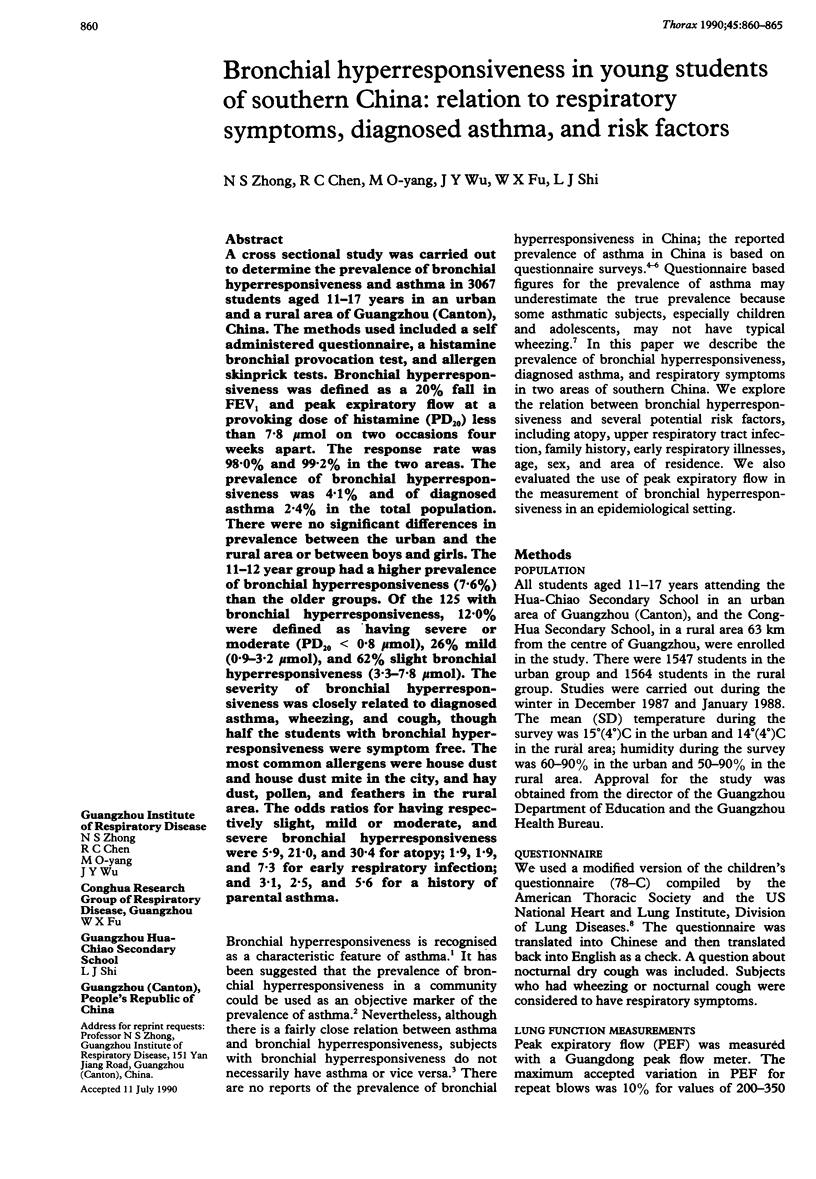
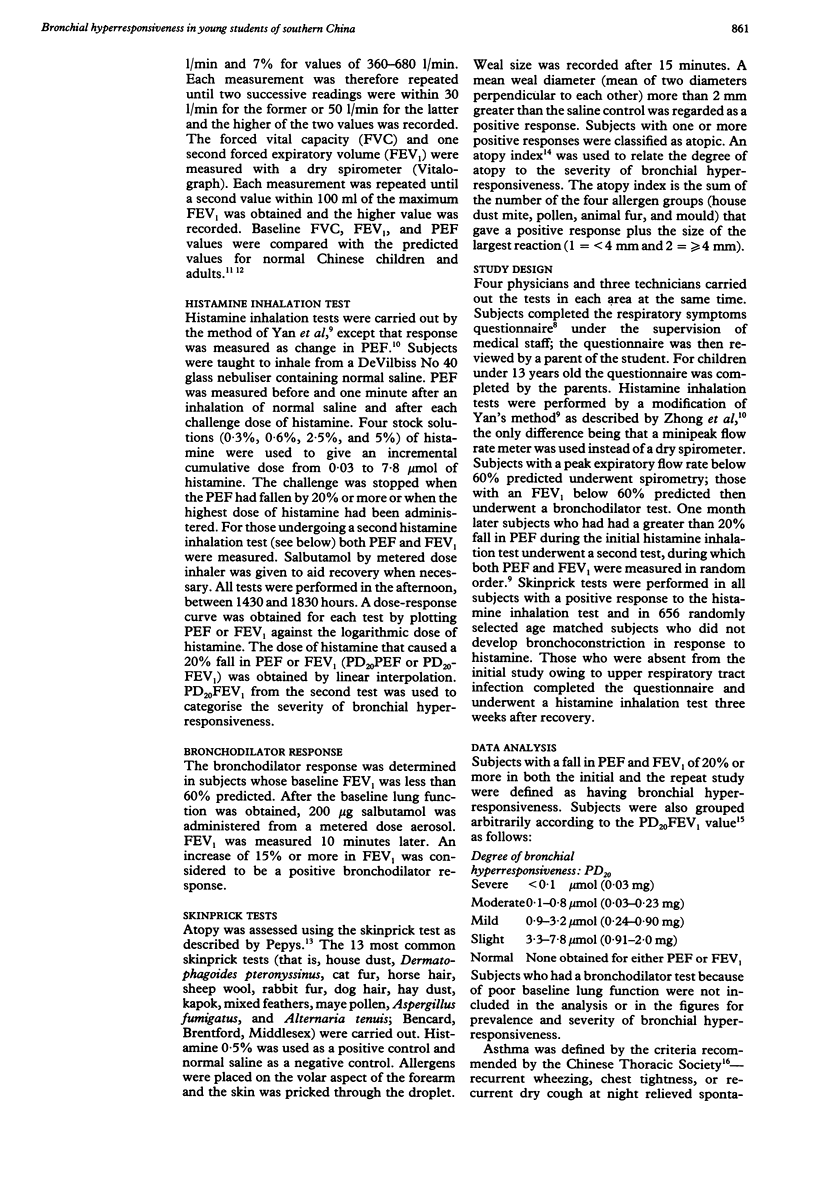
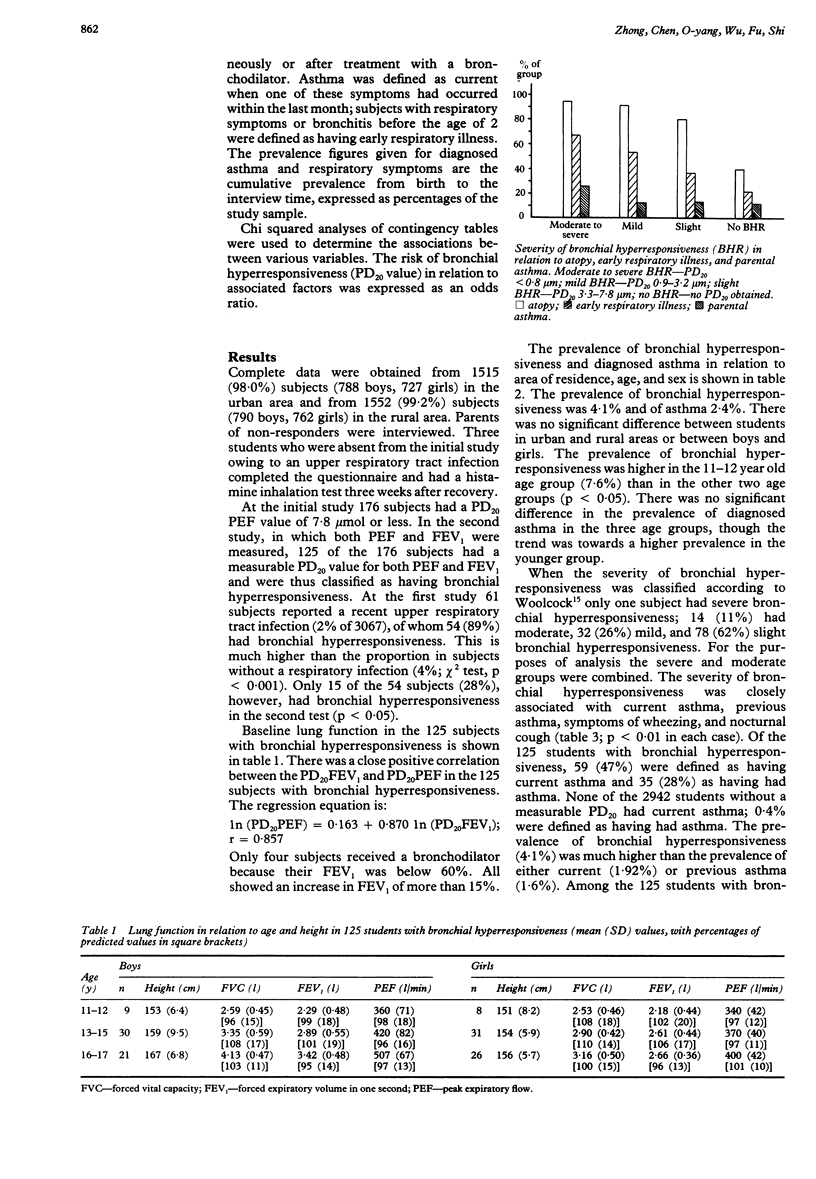
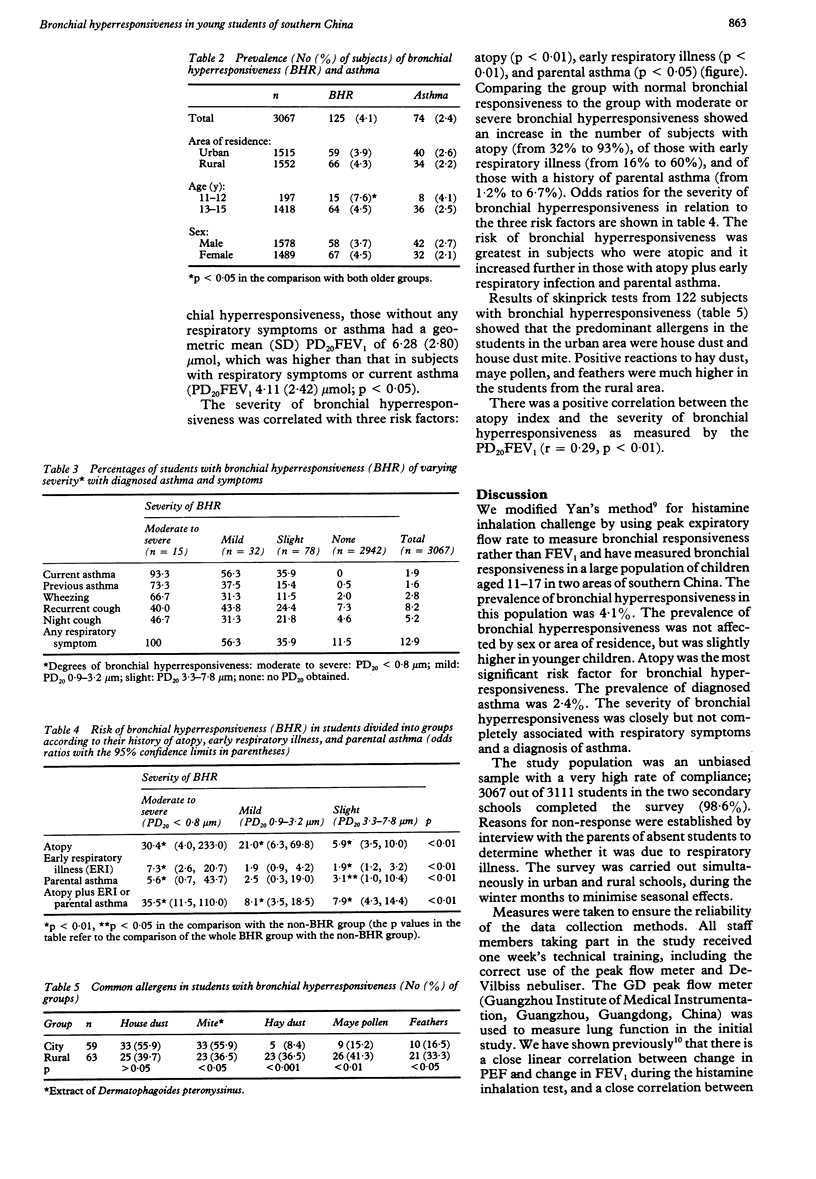
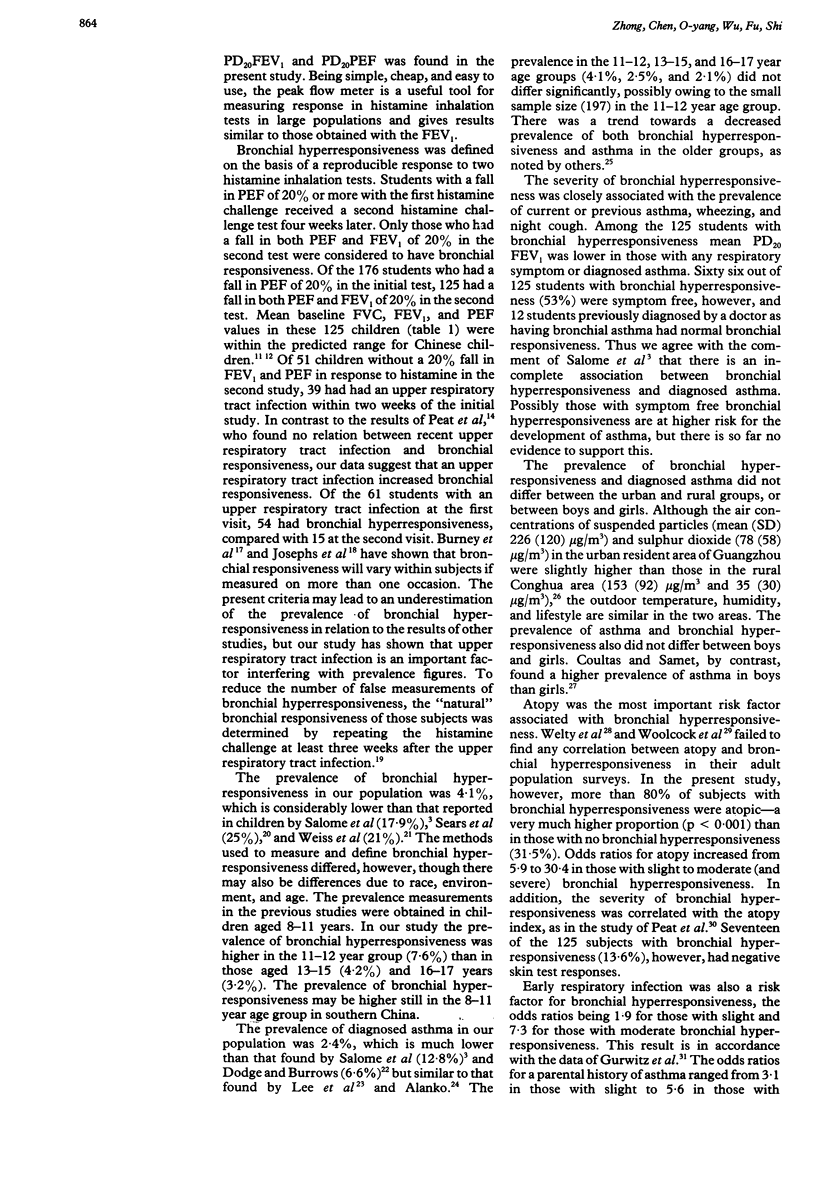
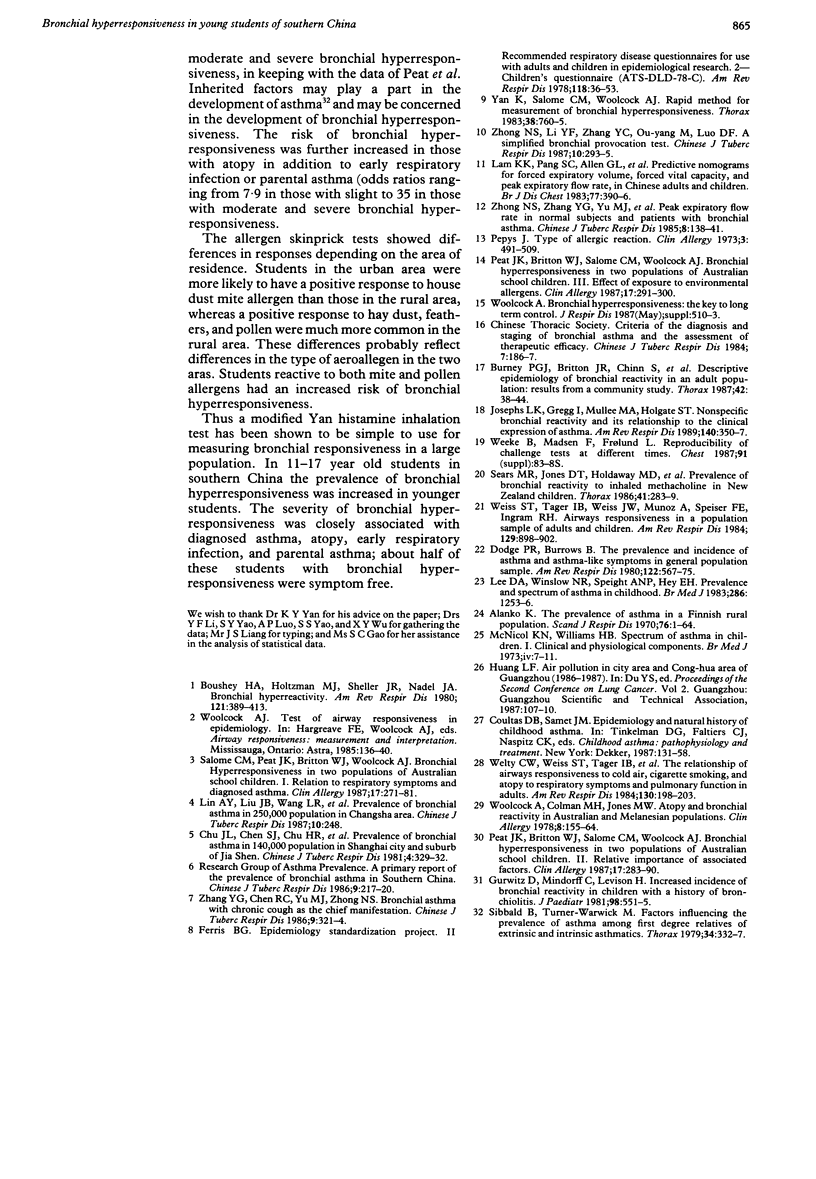
Selected References
These references are in PubMed. This may not be the complete list of references from this article.
- Alanko K. Prevalence of asthma in a Finnish rural population. A study of symptomatic subjects tested for bronchial hyperreactivity. Scand J Respir Dis Suppl. 1970;76:1–64. [PubMed] [Google Scholar]
- Boushey H. A., Holtzman M. J., Sheller J. R., Nadel J. A. Bronchial hyperreactivity. Am Rev Respir Dis. 1980 Feb;121(2):389–413. doi: 10.1164/arrd.1980.121.2.389. [DOI] [PubMed] [Google Scholar]
- Burney P. G., Britton J. R., Chinn S., Tattersfield A. E., Papacosta A. O., Kelson M. C., Anderson F., Corfield D. R. Descriptive epidemiology of bronchial reactivity in an adult population: results from a community study. Thorax. 1987 Jan;42(1):38–44. doi: 10.1136/thx.42.1.38. [DOI] [PMC free article] [PubMed] [Google Scholar]
- Dodge R. R., Burrows B. The prevalence and incidence of asthma and asthma-like symptoms in a general population sample. Am Rev Respir Dis. 1980 Oct;122(4):567–575. doi: 10.1164/arrd.1980.122.4.567. [DOI] [PubMed] [Google Scholar]
- Gurwitz D., Mindorff C., Levison H. Increased incidence of bronchial reactivity in children with a history of bronchiolitis. J Pediatr. 1981 Apr;98(4):551–555. doi: 10.1016/s0022-3476(81)80758-5. [DOI] [PubMed] [Google Scholar]
- Josephs L. K., Gregg I., Mullee M. A., Holgate S. T. Nonspecific bronchial reactivity and its relationship to the clinical expression of asthma. A longitudinal study. Am Rev Respir Dis. 1989 Aug;140(2):350–357. doi: 10.1164/ajrccm/140.2.350. [DOI] [PubMed] [Google Scholar]
- Lam K. K., Pang S. C., Allan W. G., Hill L. E., Snell N. J., Fayers P. M., Nunn A. J., Prime F. J. Predictive nomograms for forced expiratory volume, forced vital capacity, and peak expiratory flow rate, in Chinese adults and children. Br J Dis Chest. 1983 Oct;77(4):390–396. [PubMed] [Google Scholar]
- Mcnicol K. N., Macnicol K. N., Williams H. B. Spectrum of asthma in children. I. Clinical and physiological components. Br Med J. 1973 Oct 6;4(5883):7–11. doi: 10.1136/bmj.4.5883.7. [DOI] [PMC free article] [PubMed] [Google Scholar]
- Peat J. K., Britton W. J., Salome C. M., Woolcock A. J. Bronchial hyperresponsiveness in two populations of Australian schoolchildren. II. Relative importance of associated factors. Clin Allergy. 1987 Jul;17(4):283–290. doi: 10.1111/j.1365-2222.1987.tb02016.x. [DOI] [PubMed] [Google Scholar]
- Peat J. K., Britton W. J., Salome C. M., Woolcock A. J. Bronchial hyperresponsiveness in two populations of Australian schoolchildren. III. Effect of exposure to environmental allergens. Clin Allergy. 1987 Jul;17(4):291–300. doi: 10.1111/j.1365-2222.1987.tb02017.x. [DOI] [PubMed] [Google Scholar]
- Salome C. M., Peat J. K., Britton W. J., Woolcock A. J. Bronchial hyperresponsiveness in two populations of Australian schoolchildren. I. Relation to respiratory symptoms and diagnosed asthma. Clin Allergy. 1987 Jul;17(4):271–281. doi: 10.1111/j.1365-2222.1987.tb02015.x. [DOI] [PubMed] [Google Scholar]
- Sears M. R., Jones D. T., Holdaway M. D., Hewitt C. J., Flannery E. M., Herbison G. P., Silva P. A. Prevalence of bronchial reactivity to inhaled methacholine in New Zealand children. Thorax. 1986 Apr;41(4):283–289. doi: 10.1136/thx.41.4.283. [DOI] [PMC free article] [PubMed] [Google Scholar]
- Sibbald B., Turner-Warwick M. Factors influencing the prevalence of asthma among first degree relatives of extrinsic and intrinsic asthmatics. Thorax. 1979 Jun;34(3):332–337. doi: 10.1136/thx.34.3.332. [DOI] [PMC free article] [PubMed] [Google Scholar]
- Speight A. N., Lee D. A., Hey E. N. Underdiagnosis and undertreatment of asthma in childhood. Br Med J (Clin Res Ed) 1983 Apr 16;286(6373):1253–1256. doi: 10.1136/bmj.286.6373.1253. [DOI] [PMC free article] [PubMed] [Google Scholar]
- Weiss S. T., Tager I. B., Weiss J. W., Munoz A., Speizer F. E., Ingram R. H. Airways responsiveness in a population sample of adults and children. Am Rev Respir Dis. 1984 Jun;129(6):898–902. doi: 10.1164/arrd.1984.129.6.898. [DOI] [PubMed] [Google Scholar]
- Welty C., Weiss S. T., Tager I. B., Muñoz A., Becker C., Speizer F. E., Ingram R. H., Jr The relationship of airways responsiveness to cold air, cigarette smoking, and atopy to respiratory symptoms and pulmonary function in adults. Am Rev Respir Dis. 1984 Aug;130(2):198–203. doi: 10.1164/arrd.1984.130.2.198. [DOI] [PubMed] [Google Scholar]
- Woolcock A. J., Colman M. H., Jones M. W. Atopy and bronchial reactivity in Australian and Melanesian populations. Clin Allergy. 1978 Mar;8(2):155–164. doi: 10.1111/j.1365-2222.1978.tb00460.x. [DOI] [PubMed] [Google Scholar]
- Yan K., Salome C., Woolcock A. J. Rapid method for measurement of bronchial responsiveness. Thorax. 1983 Oct;38(10):760–765. doi: 10.1136/thx.38.10.760. [DOI] [PMC free article] [PubMed] [Google Scholar]


